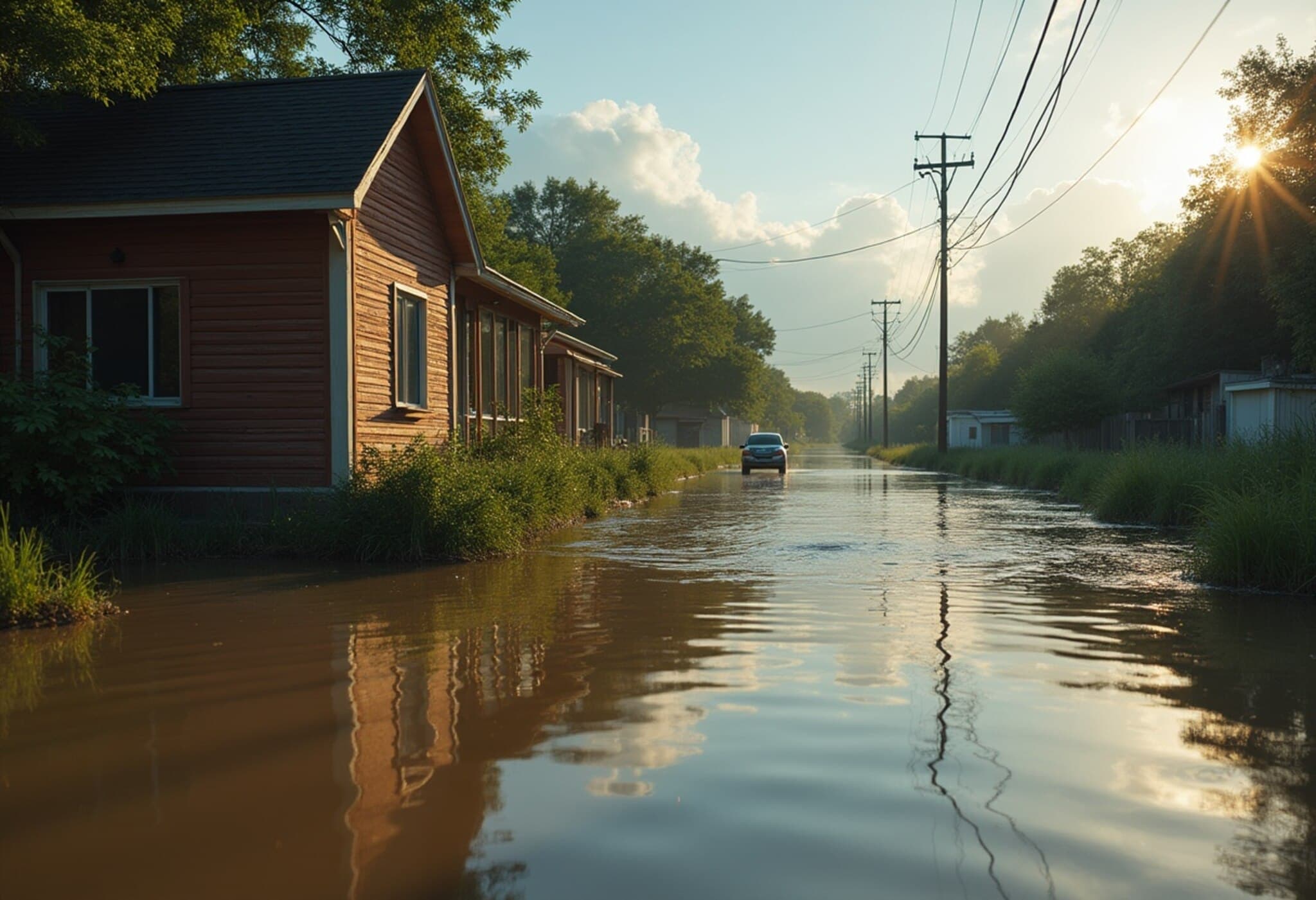Devastating Texas Flood: A Tragedy Fuelled by Years of Neglect
During the Fourth of July weekend in 2025, Kerr County, Texas, witnessed one of the deadliest flash flood disasters in recent memory. Over 100 lives were tragically lost as the Guadalupe River surged to dangerous levels within hours. While nature’s fury is often unpredictable, an in-depth investigation reveals this catastrophe was not solely an act of God but also a harsh consequence of years of governmental and administrative inaction.
Failure of Early Warning Systems Turns Deadly
Despite repeated warnings from meteorologists and a history of flood risk, Kerr County failed to implement even the most basic emergency alert infrastructure—most notably, a flood siren system. When the National Weather Service (NWS) issued urgent flash flood warnings starting just after 1 a.m., many residents remained unaware due to poor cellphone coverage and the absence of audible sirens. This silence was fatal, especially at locations like Camp Mystic, where at least 27 lives were lost.
Internal communications reviewed by CNN reveal a stark contrast: while neighboring counties actively coordinated with federal meteorologists, Kerr County officials were notably absent from real-time emergency discussions. This disconnect underscores a systemic breakdown in emergency response culture and protocol.
Chronic Underinvestment and Political Resistance
Decades of warnings about flood dangers in Kerr County fell on deaf ears. In 2016, then-County Commissioner Tom Moser described Kerr County as “probably the highest risk area in the state for flooding,” highlighting the inadequacy of current warnings as “marginal at best.” Yet subsequent efforts to upgrade emergency infrastructure repeatedly stalled:
- 2017: A FEMA grant request for nearly $1 million to install sirens was denied.
- 2021: A proposal to allocate $50,000 for a warning system failed to move forward.
- 2023: The county opted out of a state infrastructure grant covering 5% of costs, citing financial concerns.
Beyond budgets, political resistance and public apprehension about sirens played a significant role. Commissioner H A “Buster” Baldwin jokingly dismissed sirens’ importance in a 2016 meeting, reflecting a cultural reluctance to prioritize prevention over perceived quality of life disruptions. Sadly, Baldwin passed away in 2022 without seeing any improvements.
Siren Systems: A Proven Lifesaver in Neighboring Counties
Downstream in Comfort, Texas—just miles from Kerr County—the presence of flood sirens proved crucial in prompting timely evacuations, with no reported fatalities. Experts stress that while geography and flood timing differ, the presence of warning systems directly correlates with reduced mortality rates.
Philip Bedient, a flooding expert at Rice University, described the Kerr County disaster as “inexcusable,” while former river authority manager Mark Rose emphasized the financial folly: “We’ll spend more on recovery than the several million it would’ve cost to put in a system of gauges.” Currently, Kerr County is monitored by only five river gauges—far too few to effectively track and communicate flood risk.
The Human Cost of Systemic Silence
Attempts to engage with Kerr County emergency management officials have been met with silence or dismissiveness, raising serious questions about accountability. After CNN requested comment, Emergency Management Coordinator W B “Dub” Thomas abruptly canceled an interview. Officials defending their decisions cite evacuation risks during flash floods, describing emergency response as a “delicate balance.”
However, survivors and critics argue that the real failing lay in not striking any balance at all, with inadequate tools and communications in place to alert the vulnerable populations in time. Commissioner Moser poignantly remarked, “Cell phones are good, but in these Hill Country areas, signals are spotty. That’s where sirens save lives.”
Lessons for the Future: Prevention Over Reaction
The Kerr County flood serves as a somber case study in the dire consequences of neglecting emergency preparedness. It highlights key lessons for policymakers, emergency planners, and communities everywhere:
- Invest proactively in early warning systems: The upfront costs of sirens and gauges pale in comparison to the human and economic costs of disasters.
- Prioritize inclusive communication infrastructure: Especially in rural and topographically challenging areas where cellphone coverage is unreliable.
- Foster a culture that values prevention: Overcoming political and social resistance is critical to preparedness.
- Ensure inter-agency coordination: Real-time communication among local officials and federal meteorologists can save lives.
Editor's Note
The tragic loss of life in Kerr County’s floods is a stark reminder that in the face of climate change and worsening natural disasters, preparedness cannot be an afterthought. It also poses vital questions for local governments nationwide: How many more warnings will go unheeded before urgent investments in emergency infrastructure become a priority? And how can communities balance the need for safety without compromising local culture or freedoms? These are the conversations that must happen today, so we do not repeat yesterday’s deadly mistakes.
By TOI World Desk — committed to delivering in-depth, nuanced reporting on global events that matter to you.



















